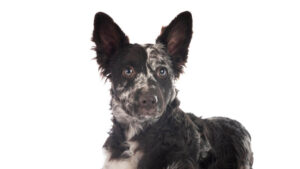
Meet the Breed: 5 Things to Know About the Mudi
Discover the versatile Mudi: a Hungarian breed perfect for both family companionship and farm work. Learn 5 key facts about this unique dog!
Home » Dog Breeds » Mudi Dog Breed
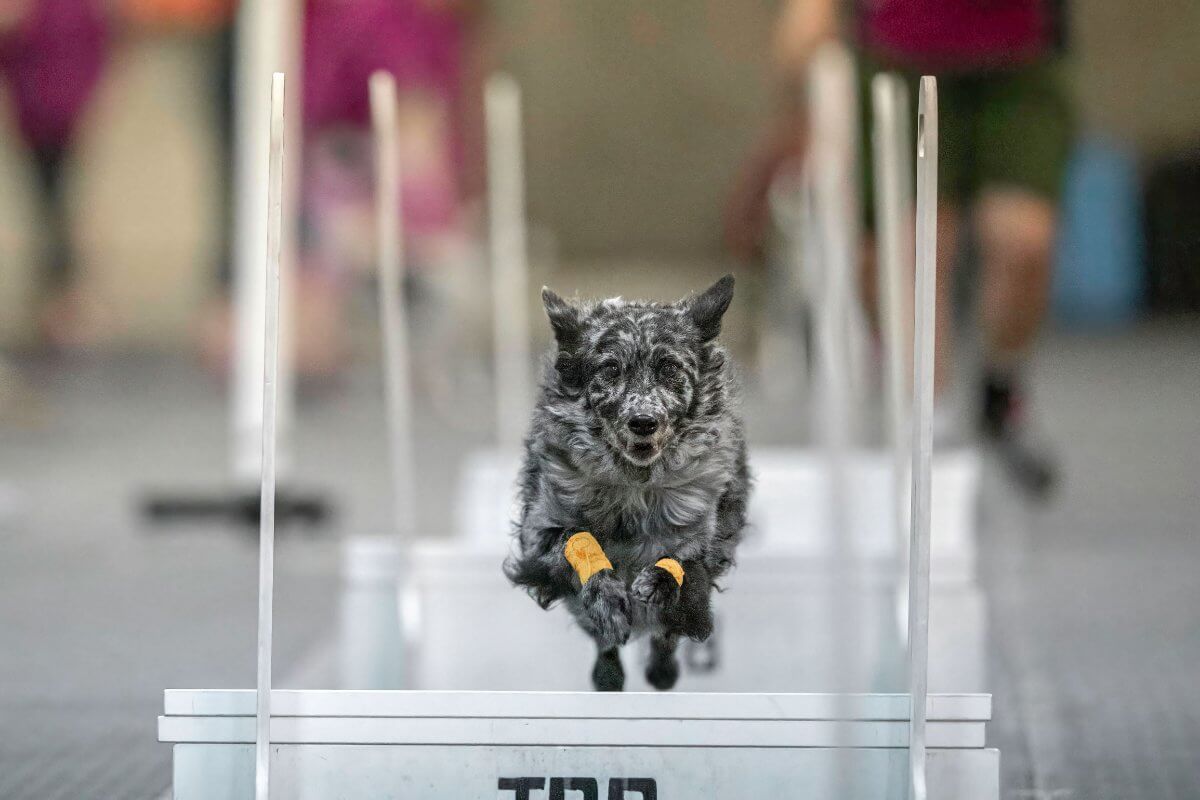
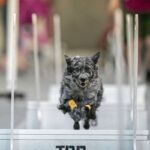
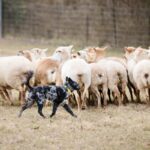
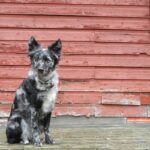
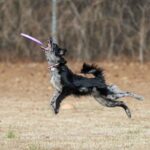
The Mudi (pronounced “moodie”) is a versatile herding dog that originated in Hungary. Renowned for its intelligence, agility, and courageous nature, the breed excels in various dog sports as well as in a variety of farming activities. Despite its working dog lineage, the Mudi is known to form strong bonds with its human companions, making these dogs suitable for both hard work and companionship. The Mudi is considered a rare breed today, with a distinctive appearance characterized by a curly coat, erect ears, and an alert expression.
Herding
15 – 18.5 Inches
18 – 29 Pounds
12 – 14 Years
| Country of Origin | Hungary |
|---|---|
| Bred For | All-Purpose Farm Dog, Companionship |
| Known For | Alertness, Intelligence, Versatility |
| Popularity | Low |
| Temperament | Alert, Adaptable, Biddable, Energetic |
| Activities | Herding, Guarding, Running, Hiking, Conformation Shows, Dog Sports |
The Mudi is a herding dog breed originating from Hungary in the 19th century. The breed was developed by farmers who needed versatile and robust dogs to help with herding and guarding livestock. The Mudi’s ancestors were likely Hungarian herding dogs mixed with other European herding breeds. Despite its long history in Hungary, the breed was not officially recognized until the 1930s. Dr. Desző Fényesi, a Hungarian cynologist, took an interest in these courageous and intelligent dogs and lobbied for their recognition as a distinct breed.
The Mudi played a crucial role in herding flocks of sheep and cattle in its native country, showcasing its incredible agility, intelligence, and herding instinct along the way. The breed is also known for its bravery, taking on the role of a guardian and protector of the flock against predators. The Mudi’s versatility extends beyond herding, however, as these dogs have been used in search and rescue operations as well as in a variety of action-packed dog sports.
The Mudi gained official recognition by the American Kennel Club (AKC) in 2004, categorizing it as a member of the Herding Group. In Europe, the Federation Cynologique Internationale (FCI) also recognizes the Mudi, further solidifying its standing as a distinct and important purebred.
Over the years, the Mudi has maintained its reputation as an excellent herding dog, but it has also become a cherished companion for families and individuals alike who admire the breed for its intelligence, loyalty, and playful nature. Despite its many fine qualities, the Mudi remains a rare breed, with a core group of enthusiasts and breeders who are dedicated to preserving the breed’s unique characteristics and promoting its suitability as a working dog and a household pet.
The adult male Mudi typically stands between 16 and 18.5 inches tall at the shoulder, with mature females measuring from 15 to 17.5 inches..
In terms of weight, a healthy male Mudi usually weighs around 24 to 29 pounds, while females typically weigh less, between 18 and 24 pounds.
The Mudi possesses a well-proportioned body that showcases the breed’s strength and agility. The build of these dogs reflects their herding heritage, with a muscular yet lithe structure enabling swift and supple movement. The length of the body, from the point of the shoulder to the point of the buttock, is nearly equal to the dog’s height at the withers. Despite the breed’s moderate size, Mudik (the plural form of Mudi) have a robust constitution, equipped with medium bone and well-developed muscles that are essential for herding work and other day-to-day physical activities.
Texture: The Mudi’s coat is dense and wavy or curly, with a medium length that suits the breed’s active lifestyle. The texture not only contributes to the dog’s overall rugged and ready appearance, it also provides the kind of protection that’s necessary in all weather conditions. The coat is uniformly wavy or curly on the body and short, straight, and smooth on the head and face. The body’s coat can measure 1-3 inches in length and may present various cowlicks and ridges. The backs of the forelegs and upper thighs are feathered and the coat on the tail is abundant.
| Standard Color | |
|---|---|
| Black | ee |
| White | ee |
| Yellow | ee |
| Gray | ee |
| Graybrown | ee |
| Brown | ee |
Markings: Merle Markings
A Note About Color: Black and gray Mudis have solid coloration overall. Yellow & white, gray-brown, and brown dogs may be variously shaded. Solid-colored dogs and dogs with the merle pattern are equally valued, although white markings are not desirable. Wolf-gray, black & tan, and albino are unacceptable colors in the Mudi.
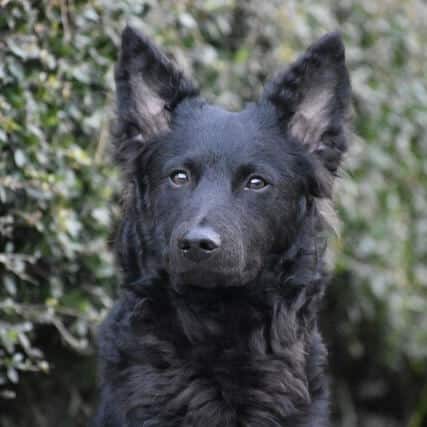
The Mudi has a tail that follows the natural line of the croup, harmonizing well with the overall balance of the body. The tail may be of any length, including a natural “bobtail.” All tail lengths are considered equal, although docking is not necessarily encouraged in the breed.
In motion, a tail at any length is carried higher than the topline. Longer tails are typically carried over the back in a graceful semi-circle. At rest, all tails hang naturally below the topline, although a tightly-curled “pigs-tail” is not desirable.
In terms of appearance, the tail is bushy, adding to the breed’s rustic and natural look. The hair on the tail is longer than on the rest of the body, but it is not excessively feathered. This quality ensures a tail that remains a distinct and expressive part of the breed’s anatomy and showcases the breed’s distinctive silhouette.
Adopting a Mudi to the home or farm brings with it a blend of energy, intelligence, and loyalty. These characteristics can make this dog a remarkable companion, but they also present unique challenges and responsibilities for the owner. It’s important for potential Mudi caretakers to understand these aspects to ensure a harmonious and healthy living environment for everyone concerned.
Mudik are generally robust and healthy, blessed with a sturdy constitution that serves them well in their various roles. However, they are not immune to health issues, and like all dogs, they are susceptible to certain conditions. Prospective Mudi owners should work closely with reputable breeders and veterinarians to monitor and maintain their dog’s health.
Lifespan: The average life expectancy of a Mudi spans from 12 to 14 years. However, with proper care, regular health check-ups, and a well-balanced diet, many Mudik can live beyond these years.
While Mudik are typically strong and hardy dogs, like all breeds and mixed breeds they have a susceptibility to specific health issues. Prospective Mudi owners should familiarize themselves with these potential health risks to ensure they are prepared to provide the best care for their canine companion.
Here is a list of some health issues that Mudik may encounter:
To mitigate these risks, it’s crucial to work with a reputable breeder who conducts health screenings and can provide clearances for common conditions found in the breed. Regular veterinary check-ups, a balanced diet, and consistent exercise are also vital in maintaining the health of any dog.
The Mudi is known for its intelligence, agility, and versatility, making it a favored breed for various canine sports and activities. However, these traits also mean the Mudi requires consistent mental and physical stimulation to stay happy and well-adjusted.
Mudik tend to form strong bonds with their families and can be very affectionate and loyal. This breed typically enjoys being involved in family activities and thrives in environments where it is part of the daily hustle and bustle. However, their strong bonding can sometimes lead to separation anxiety if left alone for extended periods. Ensuring that the Mudi has plenty of toys and activities to keep it occupied when alone can help to mitigate this.
When it comes to other dogs, Mudik generally get along well with their canine companions, especially if they have been raised together. However, due to the breed’s herding instincts, they may try to herd other pets or even small children. Early socialization and training can help to manage these instincts and ensure that the Mudi is well-behaved around other animals and people.
Mudik can be reserved around strangers, and while they are not typically aggressive, they can be wary of unfamiliar people. Proper socialization from a young age can help the Mudi to become more comfortable and confident in a variety of settings and situations.
Given the breed’s intelligence and eagerness to please, Mudik respond well to positive reinforcement training methods. Consistent training from a young age is essential to ensure the Mudi grows up to become a well-mannered and obedient companion. High intelligence means the dog can pick up on commands quickly, but it also means it will require mental stimulation to prevent boredom.
The Mudi is generally good with children, especially if it has been raised with them. However, as with any dog, it’s important to teach children how to approach and interact properly. To support the safety of both the dog and the kids, supervision is necessary when a Mudi is around very young children.
Feeding a Mudi a balanced and nutritious diet is essential for its overall health and well-being. This active and energetic breed requires a high-quality dog food that supports its lifestyle and provides all the necessary nutrients for optimal health.
When feeding a Mudi puppy, it is crucial to select a puppy formula that’s designed to support growth and development. These formulas typically have a higher protein content and are enriched with essential vitamins and minerals. It’s important to follow the feeding guidelines provided on the dog food packaging or those provided by a veterinarian.
As the Mudi matures into an adult, transitioning to an adult dog food formula will be necessary. The amount of food an adult requires can vary based on age, activity level, and metabolism. On average, a Mudi can require between 1.5 to 2.5 cups of high-quality dry dog food per day, divided into two meals.
It’s crucial to monitor the dog’s body condition and adjust its food intake accordingly to prevent overfeeding and potential weight gain. Maintaining a healthy weight is vital for this breed, as excess weight can put additional strain on the joints and lead to other health issues.
In addition to giving regular meals, Mudik may benefit from healthy treats, especially when used as rewards during training sessions. However, treats should be given only in moderation, and it’s important to ensure they do not make up a significant portion of a dog’s daily caloric intake.
Access to fresh water at all times is also essential for a dog’s health. It’s important to make sure the Mudi has a clean bowl of water available at all times.
Lastly, it is advisable to consult with the Mudi’s breeder if there are any dietary concerns. Veterinarians and canine nutritionists can also provide guidance and recommendations that are tailored to a dog’s individual health requirements. This will help to ensure each dog receives the proper nutrition necessary for a long and healthy life.
The Mudi is known for its intelligence and eagerness to please, which makes these dogs relatively easy to train. The breed excels in Obedience, showing a keen ability to pick up commands and cues quickly. However, its intelligence also means the Mudi requires mental stimulation to prevent boredom, which can lead to undesirable behaviors.
Mudik possess a moderate tendency to bark. They are alert and attentive, often using their voice to communicate with their human companions or to alert them to something amiss in their environment. Proper training can help to manage their barking tendencies, ensuring that it doesn’t become excessive.
With their intelligence comes a high wanderlust potential. Mudik are energetic and curious, often showing a desire to explore their surroundings. Training and socialization from a young age are crucial to manage this tendency, teaching them to stay within boundaries and respond to recall commands reliably.
The Mudi has a noticeable inclination to chase, and this trait can be attributed to the breed’s herding heritage. A controlled environment and training are needed to manage the breed’s chasing tendencies, particularly if the dog is expected to coexist with smaller animals.
The Mudi possesses a high energy level, demanding regular and vigorous exercise to stay happy and healthy. These dogs thrive in active environments where they can burn off their abundant energy. They show a remarkable intensity in all they do, whether it’s playing fetch, running around, or participating in dog sports. Mudik are also known for their playful nature, enjoying interactive games and activities that engage both their minds and bodies.
| Energy Level | Moderate to High |
|---|---|
| Exercise Requirements | 1 Hour/Day (Minimum), Daily Walks, Vigorous Running, Regular Exercise, Playing with Another Dog, Mental Stimulation |
Due to the breed’s herding background, the Mudi has a natural inclination towards activities that involve challenges and movement. These dogs excel in Agility Trials, Herding Trials, and other canine sports that require speed, precision, and intelligence. Ensuring that they get sufficient exercise is crucial, as a Mudi left to its own devices may resort to undesirable behaviors out of boredom.
It’s important to note that while the Mudi is energetic and requires ample exercise, activities should be well-structured and safe. These dogs have a tendency to be overzealous in their activities, which can sometimes lead to injuries if not properly supervised. Providing a variety of physical and mental challenges will help to keep them engaged and satisfied.
Mudis are known for their wavy or curly coat, which is medium in length and requires a moderate amount of grooming to keep it in top condition. While they are not the most high-maintenance breed in terms of grooming, regular brushing is necessary to prevent matting and tangles, particularly in the denser areas of their coat.
| Coat Type | Wavy to Curly, Dense |
|---|---|
| Grooming Requirements | Weekly Brushing, Occasional Bathing, Routine Ear Cleaning, Periodic Nail Trimming, Regular Tooth Brushing |
The coat of the Mudi tends to pick up debris and dirt, so regular checks and gentle cleaning are beneficial to maintain cleanliness. While this breed does shed, it is generally not excessive. However, during seasonal changes, owners might notice an increase in shedding, and during these times more frequent brushing can help to manage the loose hair and maintain the coat’s condition.
In terms of other grooming needs, Mudik require regular nail trims, ear checks, and dental care. Ensuring that their nails are kept short will prevent discomfort and alleviate potential mobility issues, while regular ear checks can help to identify signs of infection or irritation early on. Dental hygiene is also crucial for the breed, so incorporating tooth brushing into the grooming routine can help with maintaining good oral health.
The Mudi is a versatile breed, capable of adapting to various living conditions when provided with adequate exercise and stimulation. However, there are certain factors to consider to ensure the dog thrives in its environment.
Regarding apartment living, Mudik can adapt well as long as their exercise needs are met. They are active indoors and will appreciate space to play, but regular outdoor activities are essential. Without sufficient physical and mental stimulation, a Mudi can become bored, leading to destructive behaviors.
In terms of weather adaptability, Mudik have a coat that provides them with some protection, but they are not suited for extreme temperatures. In cold weather, their medium-length coat offers a degree of warmth, but in severe cold additional protection, such as a dog coat, may be necessary, especially since they do not have the thick undercoat that some other breeds possess. During hot weather, it’s crucial to provide them with shade and water, and to avoid exercise during the hottest parts of the day.
The joy and excitement experienced with the arrival of a litter of Mudik are immense, but the adorable puppies also come with a set of responsibilities for ensuring each pup receives the very best start in life.
The typical Mudi puppy is energetic, intelligent, and eager to learn, which makes the early stages of life crucial for its development. It is therefore imperative to provide the pup with a safe and nurturing environment, coupled with proper socialization and training. Introducing it to various people, places, and situations will help in developing a confidence and ensuring it grows up to become a well-rounded adult.
Proper nutrition is also vital during this stage of life, and feeding a balanced, high-quality puppy food is essential. It is important to adhere to feeding guidelines and to adjust portions as necessary. This will support the puppy’s growth while preventing overfeeding that can lead to developmental problems.
In terms of training, starting with basic commands and using positive reinforcement techniques from a young age will set the foundation for good behavior. The Mudi puppy is a quick learner and responds best to consistent, positive training methods.
Regular veterinary check-ups are also crucial during this stage to monitor a puppy’s health, administer necessary vaccinations, and discuss overall health and wellness. Ensuring the pup is on an appropriate deworming and flea prevention schedule is vital as well.
In terms of exercise, while the typical Mudi puppy is energetic, it is important to be mindful of its growing joints and bones. Providing appropriate outlets for its energy, such as short, supervised play sessions and gentle walks, will help to expend energy without putting undue strain on the pup’s developing body.
The Mudi is a highly energetic and intelligent dog, making it an excellent candidates for a variety of activities and dog sports. The breed’s agility, speed, and eagerness to learn, and to please their handlers, contribute to the success of these dogs in many Companion and Performance events. Below is a list of activities and dog sports that are well-suited for the Mudi:
Participating in these activities and dog sports provides Mudik with the mental stimulation and physical exercise they need. It also strengthens the human-canine bond, leading to a more harmonious relationship for both dog and handler.
The Mudi is recognized by the world’s leading registries and kennel organizations, which categorize the breed into a specific Group based on its unique characteristics. This breed is recognized worldwide under the following Group designations:
| Organization | Group Designation |
|---|---|
| AKC (American Kennel Club) | Herding |
| UKC (United Kennel Club) | Herding Dog |
| CKC (Canadian Kennel Club) | Herding |
| ANKC (Australian National Kennel Council) | Working Dogs |
| RKC (The Royal Kennel Club) | Not Recognized |
| FCI (Fédération Cynologique Internationale) | Group 1: Sheepdogs and Cattledogs; Section 1: Sheepdogs |
The ideal Mudi is described by a Breed Standard that is approved by each of the world’s leading registries and kennel organizations. The Breed Standards for this breed may be found in the following links:
| Organization | Breed Standard |
|---|---|
| American Kennel Club | AKC Mudi Breed Standard |
| United Kennel Club | UKC Mudi Breed Standard |
| Canadian Kennel Club | CKC Mudi Breed Standard |
| Australian National Kennel Council | ANKC Mudi Breed Standard |
| The Royal Kennel Club | Not Recognized |
| Fédération Cynologique Internationale | FCI Mudi Breed Standard |
Establishing a network of support and community is vital for rare breeds like the Mudi, and this is where breed clubs play an essential role. These organizations are dedicated to the preservation, protection, and promotion of the Mudi, providing resources, support, and events for Mudi owners, breeders, and enthusiasts.
In the United States, the Mudi Club of America serves as a primary organization for those who have an interest in the breed. The club’s volunteers work tirelessly to educate the public about Mudik, support responsible breeding practices, and organize events that showcase the breed’s versatility and skills.
Joining a Mudi club provides owners and enthusiasts with a community of support, knowledge, and resources, helping to ensure the well-being and future of this exceptional breed.
Given the breed’s rarity, breed-specific rescue organizations are scarce. However, this doesn’t mean that there are no avenues for adopting a Mudi in need of a second home. National breed clubs occasionally take on the responsibility of rescue and rehoming dogs in need, utilizing their network of enthusiasts and breeders to help dogs in need find a new home.
In the United States, while there may not be a specific rescue organization for Mudik, the Mudi Club of America is an invaluable resource. The volunteer members of this organization are ready to assist in the rehoming of any Mudi and can provide guidance for people who are looking to adopt individual dogs. Additionally, other herding dog rescues could, on occasion, have a Mudi or Mudi mix in need and available for adoption.
The Mudi has a unique coat that can vary from wavy to curly in texture. The coat does shed, but the amount of hair that’s discarded is generally considered to be low to moderate in quantity. Regular grooming can help to manage the shedding and to keep their coat in good condition.
No dog can be considered completely hypoallergenic, but the Mudi is often considered to be a better option for those with allergies due to the breed’s lower levels of shedding. However, if allergies are a concern, it’s important to spend time around Mudik before bringing one into the home, as individual reactions can vary. Regular grooming and bathing can also help to reduce allergens.
Yes, the Mudi is considered to be a rare breed, even in its native Hungary. The breed’s numbers are growing by degree, but these dogs are still relatively unknown in many parts of the world. Enthusiasts and breed clubs are working hard to preserve the Mudi and increase awareness of its many unique qualities.
Mudik excel in Agility due to the breed’s intelligence, agility, and eagerness to work. These dogs are quick learners and enjoy the mental and physical stimulation that Agility courses provide. Their nimble nature and responsive attitude make them stand-out performers in this fast-paced dog sport.
The Mudi can make an excellent family pet for an active household. These dogs tend to form strong bonds with their families and can be good with children, especially if they are raised with them. However, due to their herding instinct, it’s important to supervise their interactions with very young children and to teach both the dog and the kids how to interact safely and respectfully.
Some Mudik have the potential to be trained as Service Dogs due to their intelligence, trainability, and responsiveness. They are keen learners and can be trained to perform a variety of tasks. However, their suitability as a Service Dog would depend on the individual animal and the specific needs of the person requiring the Service Dog’s assistance.
While the Mudi is not traditionally known as a hunting dog, the breed’s intelligence, agility, and versatility mean some individuals could potentially be trained for certain types of hunting activities. The breed’s herding instincts and alertness can be advantageous in hunting scenarios. However, the Mudi’s primary role has always been herding and guarding livestock.
Mudik are intelligent, active dogs that thrive on interaction and mental stimulation. They may be able to cope with being left alone for short periods, but they are not well-suited to being by themselves all day. Providing a homebound Mudi with toys and offering mental stimulation through interactive games can help, but these dogs are happiest when they have companionship, as well as activity, to keep them engaged.

Discover the versatile Mudi: a Hungarian breed perfect for both family companionship and farm work. Learn 5 key facts about this unique dog!
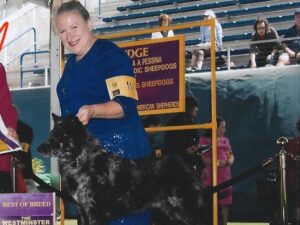
Interview with Rebecca Ingersoll, breeder of Twisted Acres Kennel – Insights on Mudi and Border Collie breeding.
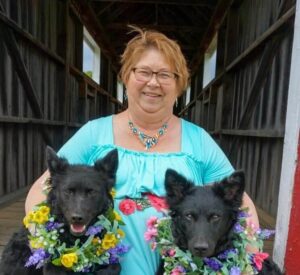
Interview with Owner Handler Theresa Stilger – I purchased my first purebred dog in junior high. I loved 4-H and my dog, but I wanted to try
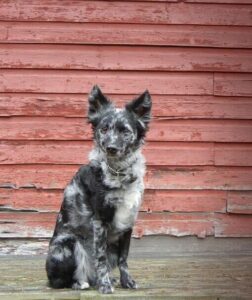
Mudi Colors | One of the most attractive elements of the Mudi is the wide variety of colors and patterns available. Read below to learn about
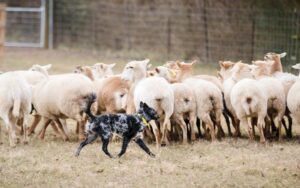
Purebred Mudi (Canis Ovilis Fényesi) – An Ideal Farm PartnerThe Mudi (pronounced “moody”) is a medium-sized Herding Dog from Hungary that has

Discover the versatile Mudi: a Hungarian breed perfect for both family companionship and farm work. Learn 5 key facts about this unique dog!

Interview with Rebecca Ingersoll, breeder of Twisted Acres Kennel – Insights on Mudi and Border Collie breeding.

Interview with Owner Handler Theresa Stilger – I purchased my first purebred dog in junior high. I loved 4-H and my dog, but I wanted to try

Mudi Colors | One of the most attractive elements of the Mudi is the wide variety of colors and patterns available. Read below to learn about

Purebred Mudi (Canis Ovilis Fényesi) – An Ideal Farm PartnerThe Mudi (pronounced “moody”) is a medium-sized Herding Dog from Hungary that has
The best way to ensure a long and happy relationship with a purebred dog is to purchase one from a responsible breeder. Not sure where to begin?
Contact the National Parent Club’s Breeder Referral Program, which is listed on the AKC Breeder Referral Contacts page.
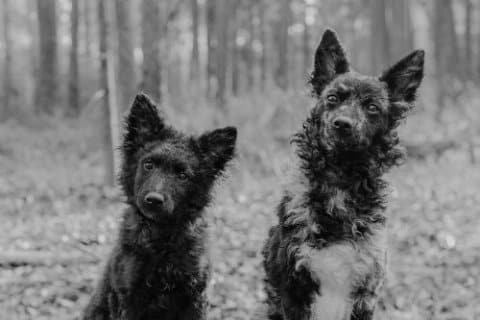

"*" indicates required fields
Showsight Magazine–the world’s most influential purebred dog publication since 1992. Each issue reaches a global audience dedicated to preserving the history and health of purpose bred dogs. Filled with award-winning editorial focused on news and insights from the dog show community, top breeders, handlers, AKC Judges, and more!